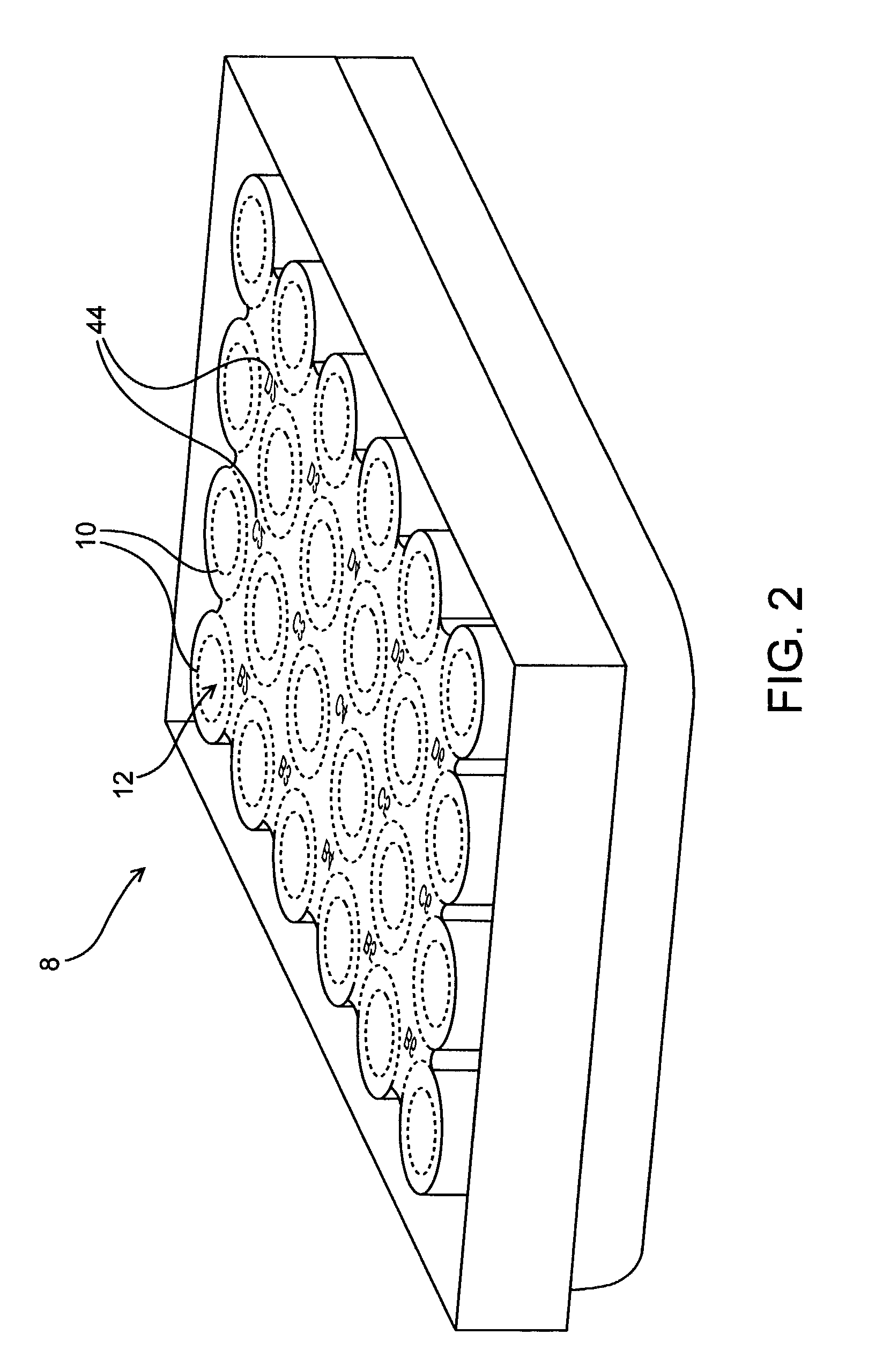Robotic microscopy systems
- Summary
- Abstract
- Description
- Claims
- Application Information
AI Technical Summary
Benefits of technology
Problems solved by technology
Method used
Image
Examples
example 1
Selection and Detection—Simultaneous Measurement of Multiple Variables
[0160]To maximize the amount of information collected in a single experiment, the total number of independent variables that can be simultaneously measured and then related to cell (e.g., neuronal) function is maximized. The wavelength and intensity of light are two properties that can be used to resolve independent variables using the present invention. To this end, fixed multi-band pass dichroic mirrors and 10-position excitation and emission filter wheels were used to examine fluorescent signals from selected portions of the spectrum. A computer controls the filter wheels to coordinate their movements during automated image acquisition. A 14-bit charge-coupled device (CCD) camera was used to resolve a wide range of signal intensities for a particular band-width of light. Finally, the camera used to capture images was placed at the basement port of the inverted microscope to minimize the complexity of the light ...
example 2
Automated Stage Movements and Focus with Low and High Numerical Aperture Objectives
[0162]To automate image acquisition, the microscope was equipped with computer-controlled motorized stage and focus. To find the focal plane, software moves the focus knob to sample images at different positions along the z-axis. The image analysis software measures each image's overall spatial frequency by performing a fast Fourier transform. The image with the highest spatial frequency determines the focal plane. The motorized stage was used to determine the number of stepper motor movements needed to move the stage one complete microscope field in the four cardinal directions using 4×, 10×, 20×, and 40× objectives. Programs were then constructed that sequentially focus the microscope, move the desired excitation and emission filter wheels into place, capture an image, and then move the microscope to an adjacent non-overlapping field and repeat the sequence. According to the type of tissue culture p...
example 3
Focusing for Different Wavelengths
[0173]Another problem became apparent during attempts to collect images of the same microscope field using different wavelengths of fluorescent light. Lenses refract different wavelengths of light by different amounts so the images formed from different wavelengths of emitted fluorescence were not focused exactly to the same point. The differences were small enough so that they were undetectable for low numerical objectives (e.g., 4×, N.A. 0.13). However, with increasing numerical aperture these differences could be resolved. Consequently, as the excitation and emission filters were changed, the objective had to be repositioned to keep images of the same microscope field sharply focused.
[0174]It was also discovered that the focal plane determined by automated focusing with transmitted light could be used as a reference to determine the position of the focal plane of fluorescence images. For a particular fluorophore, objective, excitation and emissio...
PUM
 Login to View More
Login to View More Abstract
Description
Claims
Application Information
 Login to View More
Login to View More - R&D
- Intellectual Property
- Life Sciences
- Materials
- Tech Scout
- Unparalleled Data Quality
- Higher Quality Content
- 60% Fewer Hallucinations
Browse by: Latest US Patents, China's latest patents, Technical Efficacy Thesaurus, Application Domain, Technology Topic, Popular Technical Reports.
© 2025 PatSnap. All rights reserved.Legal|Privacy policy|Modern Slavery Act Transparency Statement|Sitemap|About US| Contact US: help@patsnap.com



